Bear Defense Guns – What to Consider When Weighing Your Options
Love ‘em or hate ‘em, guns are something people tend to be passionate about. Whatever your feelings on the topic in general, using one to defend yourself against bears is its own special consideration! Bear defense guns have a specific purpose, one everyone hopes they’ll never need.
In this article, we’ll look at what you’d need in a gun to stop an aggressive bear. We’ll discuss how effective they are according to peer-reviewed studies, and whether the law says it’s okay to use them. Finally, we’ll talk about options… because why not explore all of them, right?
What Is a Bear Defense Gun
Any gun used against a bear could rightly be called a “bear defense gun.” And whichever one you happen to have handy when a grizzly is in a serious charge should be what you use to defend yourself.
But when people look for something to carry specifically for the purpose of preventing bodily contact during a human-bear conflict, they’re usually looking for 3 things.
- Portability
- Dependability
- Stopping Power
Let’s break down where these key ingredients take us.
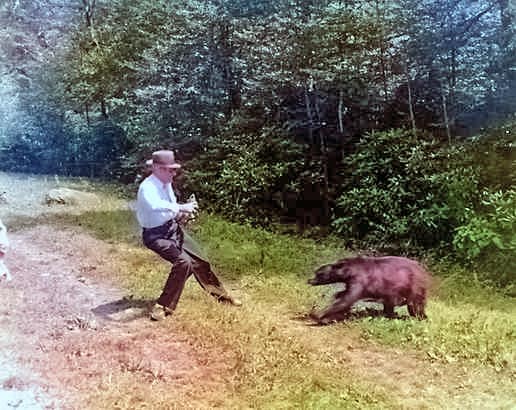
Historic National Park image of a black bear charging at a tourist. Note the pinned back ears. – NPS
Portability
Unless you’re out hunting and intend to have it in your hands most of the time, carrying a long gun probably isn’t the best option. Slinging a rifle across your back for a long hike may be comfortable enough, but it’s not exactly easy access. Having it on your shoulder may make it easy to deploy, but it’s not exactly comfortable for long periods of time.
That leads most to choose a hand gun over a long one for bear protection.
But there are dozens of options to sort through when looking for a handgun. Some are highly packable while others are likely to get left behind… because seriously, who wants to lug an extra 4+ pounds around on their hip?
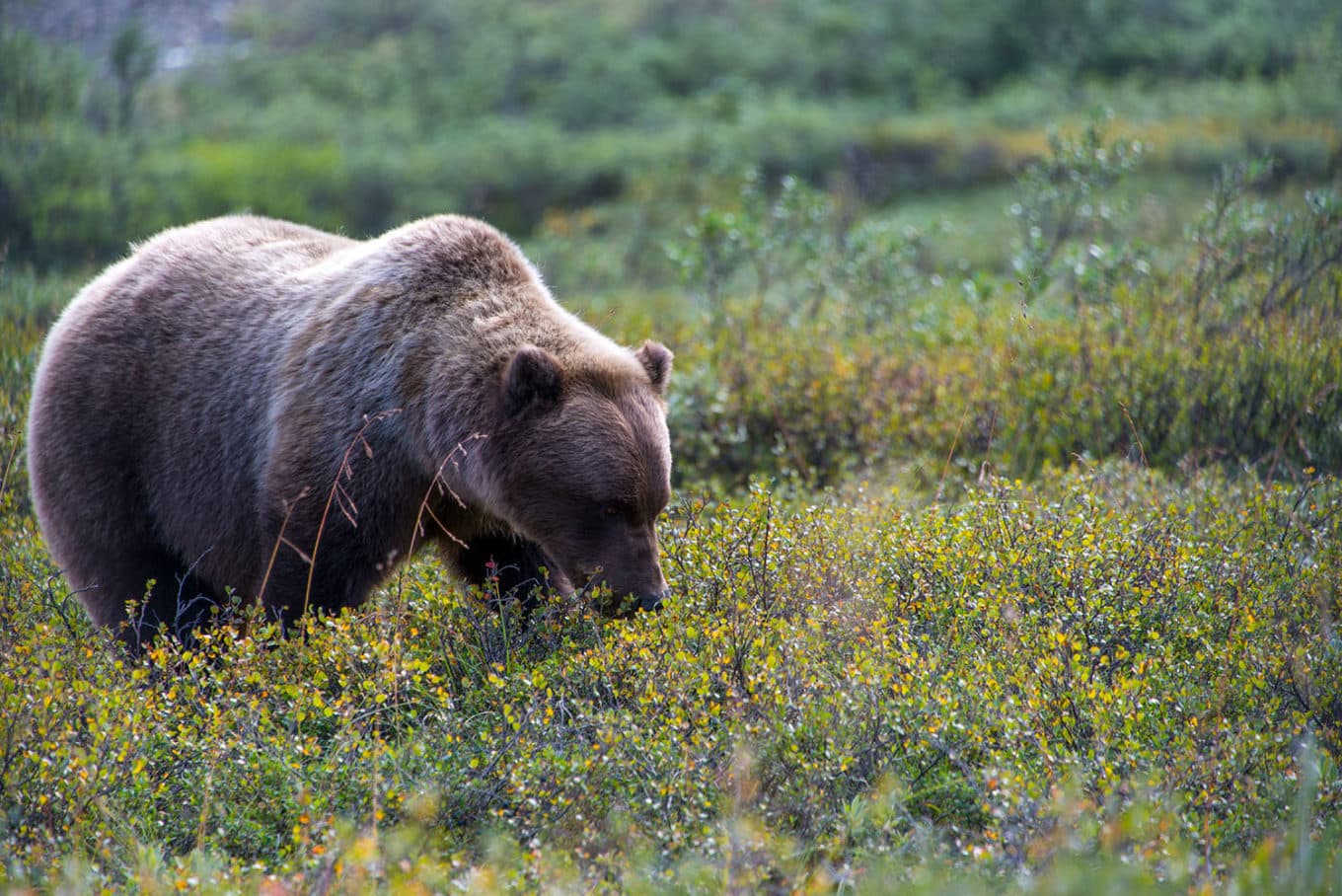
You’ll also have to shop for a holster for safe carry options. Where you want to carry – whether on the hip, in a shoulder holster, or in the small of your back – will depend largely on what other gear you’ll have to carry and what’s most comfortable for you.
So while choosing “handgun” may seem like narrowing it down, there’s definitely a lot left to consider. Let’s move on to the second factor.
Dependability
Dependability is a word that means more than “it shoots when I want it to.” You want that, obviously, but plenty of handguns on the market would tick this box. You’ll have to dig a little deeper to decide what you need.
I took a little rabbit trail to solidify my knowledge on the differences between the two types of handguns – revolvers and pistols. Daniel Reedy provided an excellent rundown between the two and concluded that each has its good and bad points when it comes to dependability.
Summed up basically, pistols are better at taking abuse (dirt/rain/impact) while revolvers are better at taking neglect. There’s also more room for user error with pistols, since poor grip or stance can compromise the guns ability to work well long-term. But also a revolver’s delicate inner workings can be compromised from a harsh fall or impact.
His best advice is to know the gun you have and treat it as it needs.

One of the upsides to a pistol worth mentioning is the extra chances you get. High-capacity magazines can carry 3 times what a revolver carries and then some, plus you can carry an extra in the chamber if that’s your style. That being said, a well-placed bullet from a high-powered revolver would mean you don’t need another try.
That brings us to the third key factor.
Stopping Power
There’s a range of options when it comes to caliber and makes of handguns you could use for bear defense. It’s important to note, however, that none of them are up to par with the power a rifle can offer.
What some may not know about caliber is that the make of the gun also impacts stopping power. Muzzle length makes a difference on accuracy, velocity, and recoil, which is why bigger guns have better stopping power. Even the massive Smith&Wesson 460 XVR can’t compare to your common 30-06 hunting rifle in terms of speed or power.
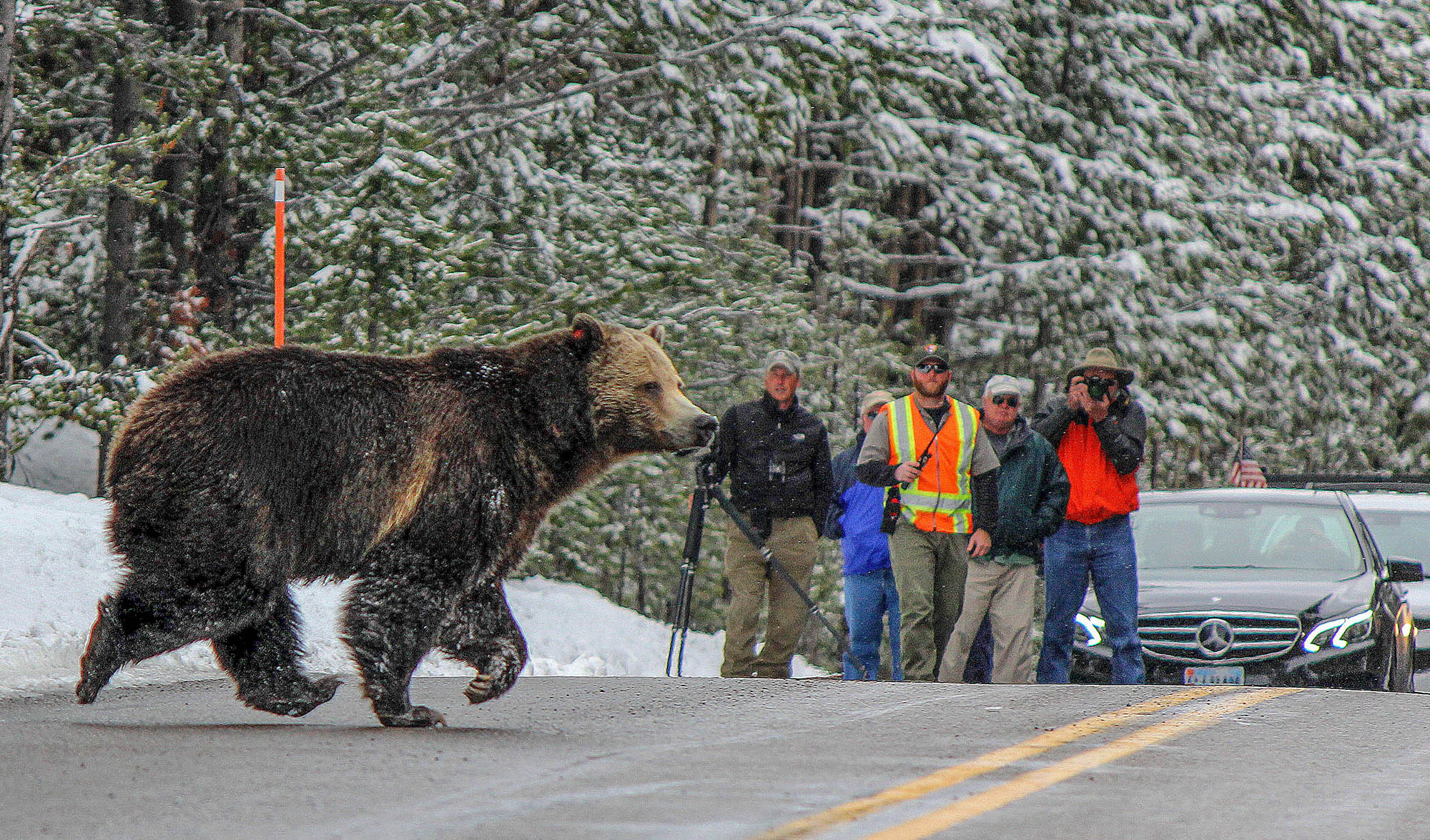
Common calibers of choice for bear guns include 10mm Auto, .357 Magnum, and .44 Magnum.
Any of these, used proficiently, have the potential to stop a bear attack. The key, of course, is the proficient part of the equation. A wounded bear is a dangerous bear, so making sure your shot hits home is going to be really important in case of a conflict.
Are Bear Defense Guns Effective?
In a 2012 study published in the Journal of Wildlife Management, handguns were 84% successful, with “success” being “when the bear was stopped in its aggressive behavior”. That sounds pretty good, but it’s important to point out another statistic from the study. People who were carrying firearms during a close encounter with a bear sustained injuries at a consistent rate, regardless of whether or not they chose to use their weapon.
The study concluded that variables with the gun itself – type, number of shots fired, etc…– didn’t really make a difference in the outcome of encounters. Other factors like the presence of fish or meat (food attractant) and bear behavior were a better predictor of success or failure.
Ultimately, it was concluded that only those “proficient in firearms” should rely on a bear gun when venturing in bear country.

Restrictions on Bear Defense Guns
But let’s say you ARE proficient. Can you strap on a big ol’ revolver and head out? There are some you can’t, like official government buildings of national and state parks, but you won’t need one there anyway. Out in the wild you just have to be aware of specific state laws. Look those up before you head out if you want to carry a bear defense gun.
You should also know that in places you can carry, you could still end up bumping into the law. For instance, even though you can legally carry in Yosemite, (and they specifically don’t allow bear spray) it’s against the law to discharge your weapon in any national park. So if you do have an encounter and fire your gun, you’re going to have some explaining to do!
In fact, this 2023 article gives an example of a man in Canada slapped with over $5,000 in fines after shooting a black bear in fear. It’s also confirmed from a spokesperson for Yellowstone National Park that using a gun in self-defense would result in an investigation and possible fines.
You’ll have to decide if it’s worth it to carry a gun and run the risk of fighting a court battle if you have the bad luck of needing to use it.
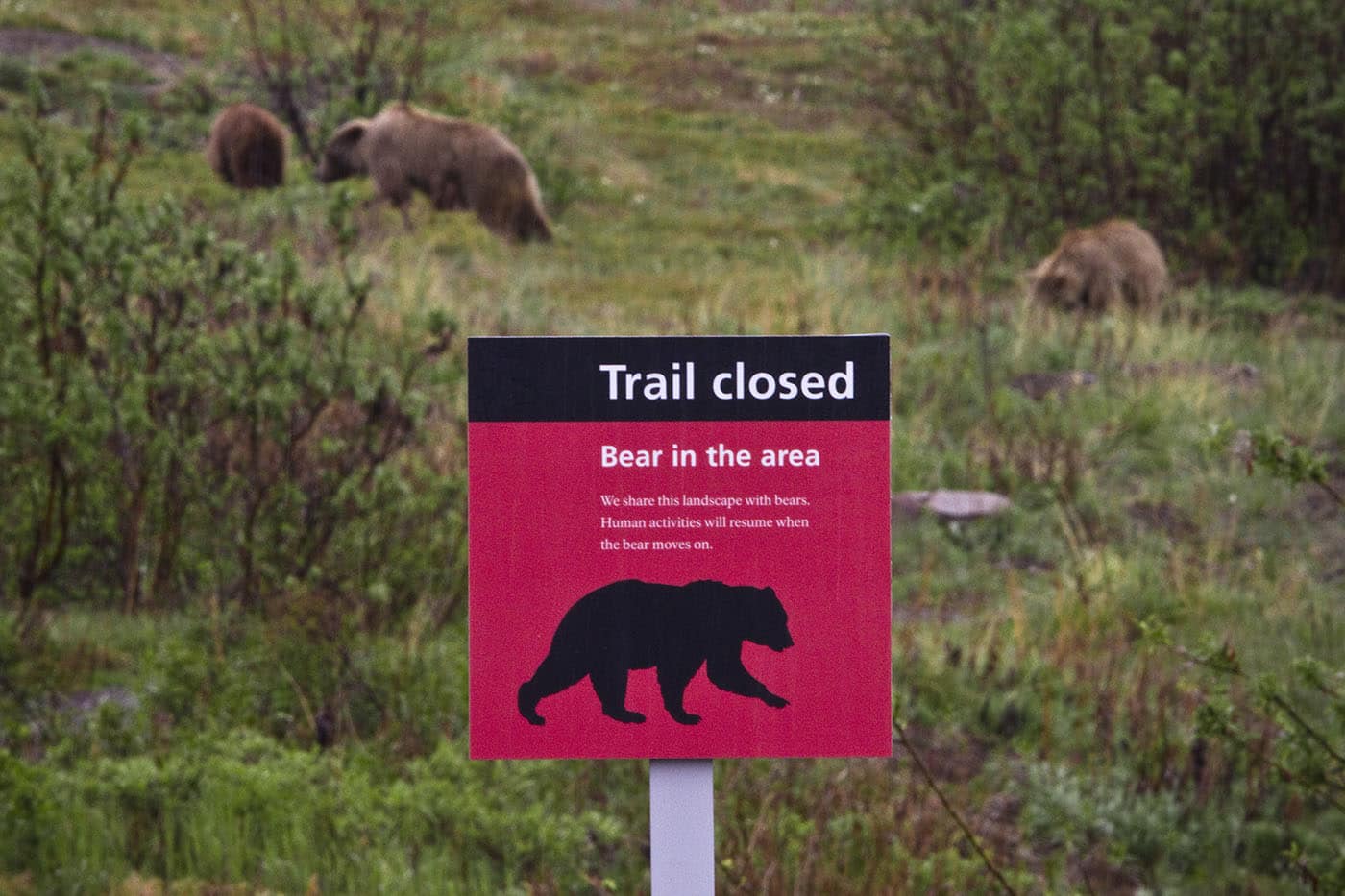
Are Bear Defense Guns Better than Bear Spray?
The crux of the matter is whether or not bear defense guns are necessary. How do they compare to the other option… bear spray?
Well, the statistics would support the idea that spray is actually MORE effective at preventing injuries and stopping aggressive behavior. A 2010 study done on bear spray incidents in Alaska revealed it to be 92% – 100% effective with slight variation between species. Most importantly, across all categories, 98% of the people involved in these encounters were uninjured. 2% sustained only mild injuries that did not require hospitalization.
Ultimately, some people decide to carry both. If you consider yourself to be a proficient firearm user and would be willing to face fines if you found yourself needing to use a gun, that’s always an option.
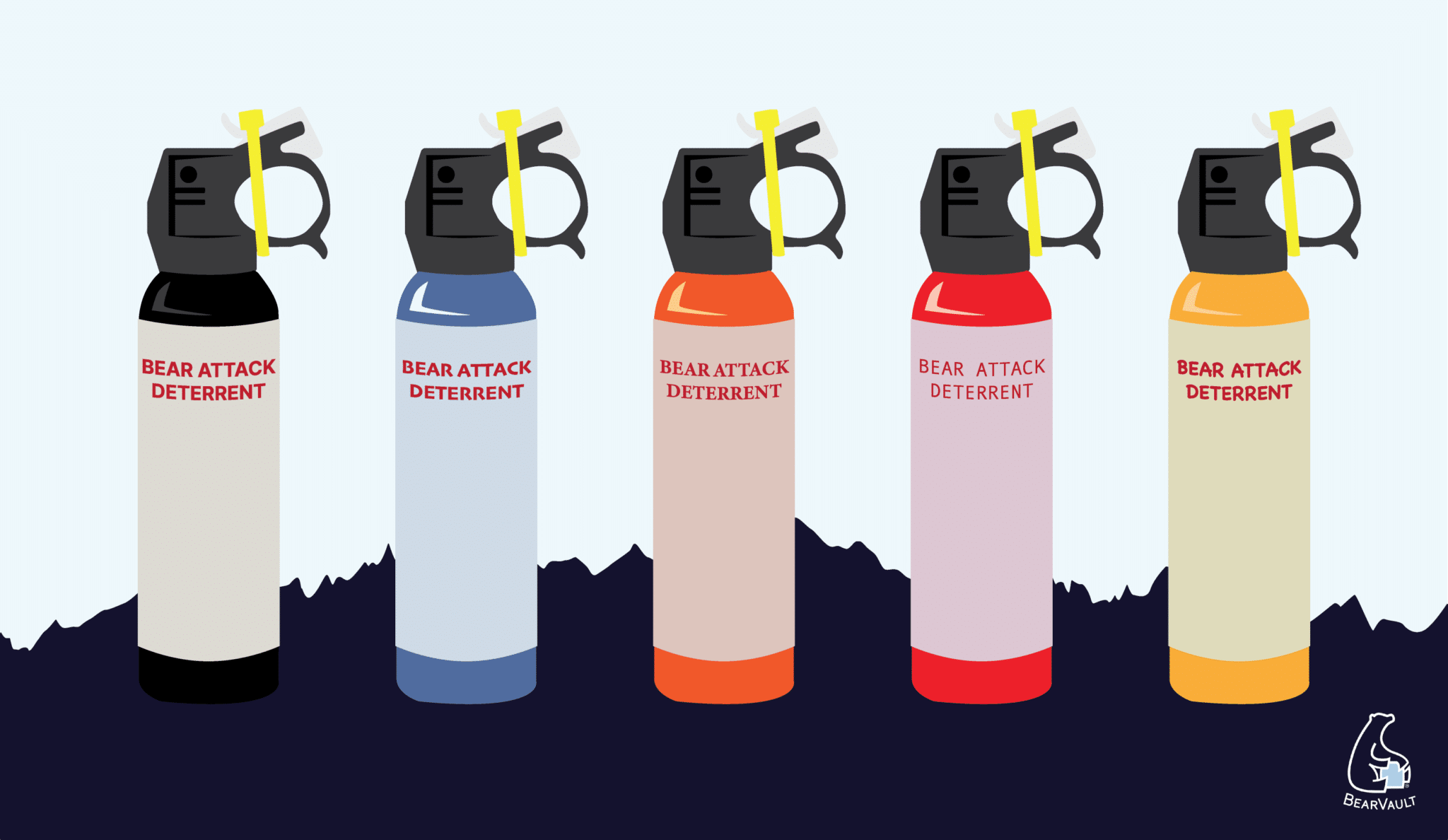
How to Carry Bear Protection
Whether you choose to carry a bear defense gun, spray, or both, the most important thing is to make sure it’s easily accessible at all times. Here are some tips to think through as you determine what’s best for you.
- Use a holster for your gun or spray.
- Don’t bury your defense under layers of clothing.
- Clip bear spray to the sternum strap or waist belt of your pack.
- Keep your defense tool close by when sleeping.
- Practice accessing it from each location you plan on carrying. Don’t assume that drawing your gun from a shoulder holster will be a seamless transition if you’re used to carrying on your hip.
Above all, keep your head on a swivel.
Be Proactive – Not Reactive
A potential downside of carrying bear defense guns is a false sense of security. Just because you have a weapon doesn’t mean you can get sloppy in bear country. Other safety measures shouldn’t just fly out the window.
- It’s good to prepare for an encounter. It’s even better to work on preventing one altogether.
- Choose campsites wisely by watching for bear signs and natural attractants like food sources.
- Practice safe food storage, like using a BearVault and storing all attractants away from your campsite.
- Stay aware on trail and make noise to alert wildlife to your presence and avoid surprising bears.
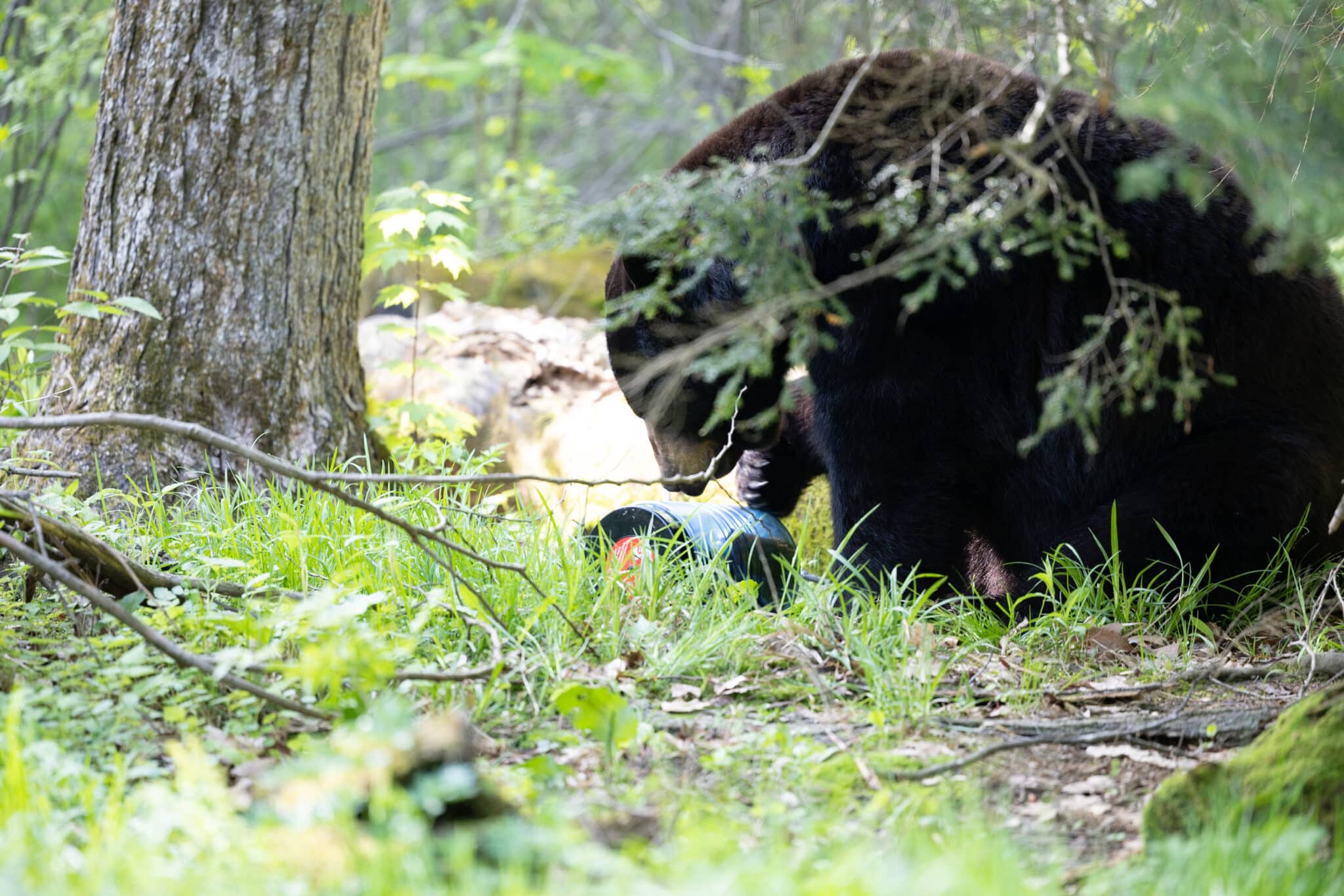
And regardless of your choice in bear defense tools, use your head and do your own research. It’s imperative not only to your safety, but to the safety of our wild places and future generations!
Author Profile

Jessica Cockroft
Jess merges her passion for words and an insatiable longing for adventure as an outdoor freelance content writer and marketer. When she’s not busy stringing words together you’ll probably find her planning another camping trip for her crew of kids or taking care of the homestead. You can find her on LinkedIn and Instagram, as well as on her own website.




